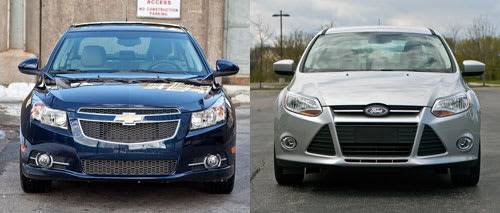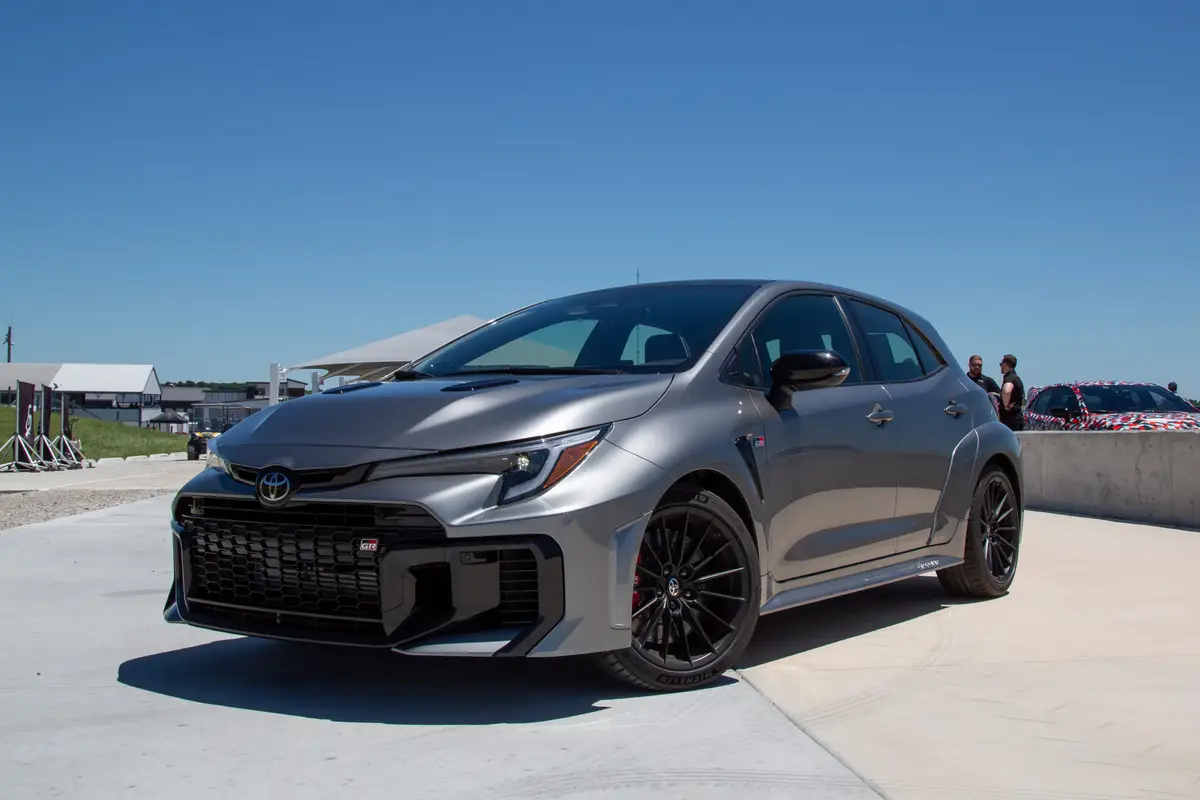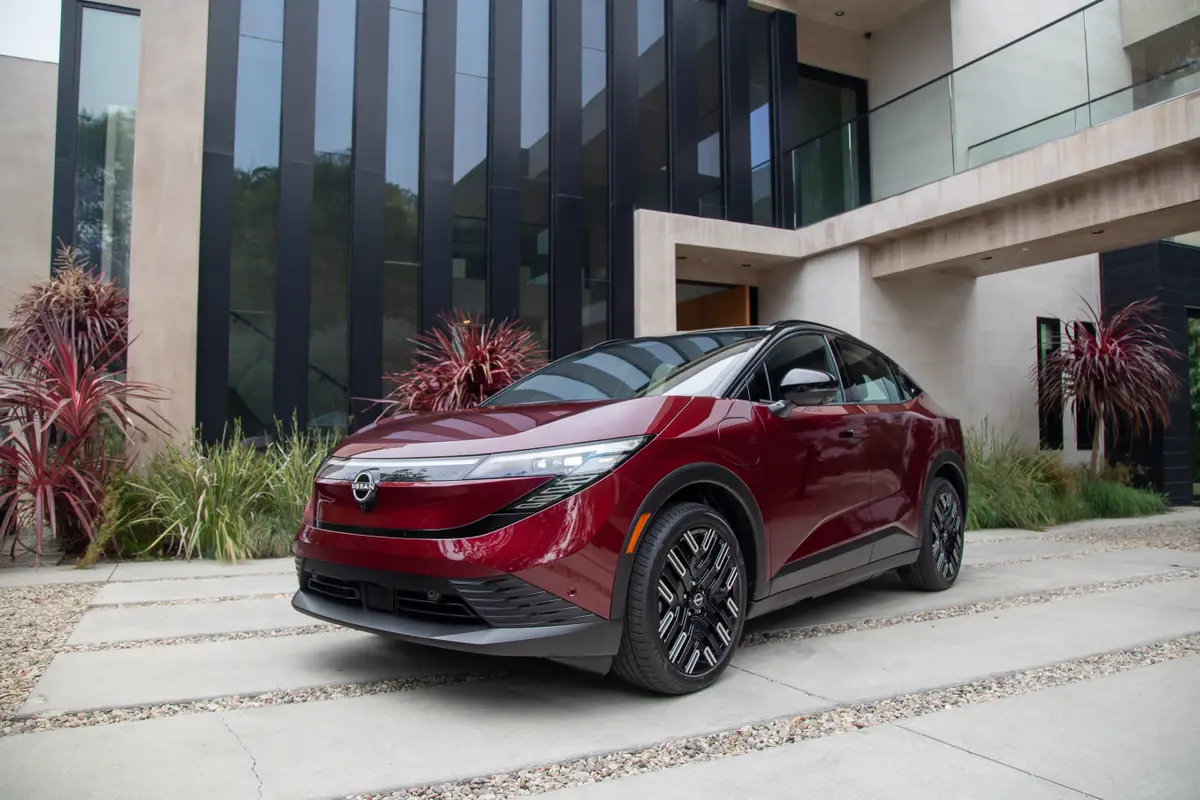Why the Chevrolet Cruze Beat the Ford Focus


Couts shopped the Cruze against Ford’s redesigned Focus, but the Ford had a smaller trunk, he says, and the Ford dealer wouldn’t budge on pricing. Couts drove home in the Chevy.
Two redesigned cars — the Cruze for 2011 and the Focus for 2012 — signal ambitious hopes for their automakers. GM sells the Cruze in six continents; Ford says it developed its latest “global” Focus with a database of adults across North and South America, Asia and Germany. But here in the U.S., drivers like Philip Couts aren’t alone. Year-to-date Focus sales are barely outpacing last year’s aging model it replaced. The Cruze, meanwhile, has become Chevrolet’s second-best-selling model, beaten only by the venerable Silverado pickup. It topped the Focus by more than 36,000 units over the past six months.
Why did the Cruze win? It’s a tale of timing and supply — and the competition is far from over.
The New Year
In January 2011, the redesigned Cruze had been on sale for three months with a robust 76-day supply to start the year. Commuter-car shoppers could choose between the Chevrolet and more than 10 sedan competitors, ranging from an excellent Hyundai Elantra to a weak Toyota Corolla. The redesigned Honda Civic and Ford Focus were still months off.
It’s no wonder, amid the thicket, that Ford was discounting the outgoing Focus up to $3,000. GM, by contrast, had only financing deals on the Cruze. The 2012 Focus wasn’t due until April. By the time it arrived, the Cruze had mounted a clear lead — 50,205 sales through March, to the old Focus’ 37,071, according to Automotive News data.
Arrive the Focus did — to supply problems as Ford struggled to transition its Wayne, Mich., assembly plant from SUV to small-car production. Through the crucial summer selling months, Focus inventory plunged to less than 22 days. Chevy dealers had a nearly 40-day Cruze stock in June and July — a huge advantage, given the Cruze’s Japanese competitors were all but run dry by Japan’s March earthquake. By the end of August, Cruze sales totaled 169,427. Ford had moved just 127,006 Focuses.
Focus inventory improved to 33 days for September on the way toward a 74-day October stock. With the 2011s gone, Ford pulled back incentives to discount financing and some scant bonus cash, similar to GM’s Cruze incentives. Parity had arrived.
Still in the Woods
Supplies in hand, the Focus gained steam. Chevrolet sold 7,788 more Cruzes in September than Ford sold Focuses; in October, the gap narrowed to 1,909, but autumn brought more trouble. Consumer Reports dinged the Focus’ reliability in its October reliability survey, citing problems with the car’s dual-clutch automatic transmission. Somehow the Cruze, which had even worse reliability in the magazine’s surveys, escaped with little press. Helped by catchy marketing — Advertising Age named the Cruze one of America’s 25 hottest brands, riding a $1.1 billion wave of Chevrolet media spending in 2010 — the Cruze stayed ahead, selling 45,630 from September through November. In the same span, Ford sold 34,430 Focuses.
But Chevrolet’s lead was shrinking.
Today, Tomorrow
That brings us to now. Through November, Chevrolet sold 215,057 Cruzes; Ford moved 161,436 Focuses in 2011. It’s all but assured the Cruze will win the year. It’s a rare occasion. Through the Focus’ U.S. tenure, GM has served up a litany of Chevrolet competitors: the Cavalier, the Cobalt and now the Cruze. In 11 full years of sales, the Focus beat its Chevrolet counterparts seven times.
The Cruze’s dominance is narrowing, but it may hold on yet. At 91 cubic feet, the Focus has the smallest cabin among a dozen cars in its segment, something that won no fans in Cars.com’s Under 20/Over 35 Shootout. The Focus ranked third, one spot behind the Cruze, in our small-car affordability index. The Cruze earned a five-star overall rating in the National Highway Traffic Safety Administration’s more rigorous crash tests; the Focus got four stars.
The Focus is a year newer than the Cruze, and most versions get better overall gas mileage. Given supply and incentive parity, will Chevrolet hang onto its lead through 2012?

Former Assistant Managing Editor-News Kelsey Mays likes quality, reliability, safety and practicality. But he also likes a fair price.
Featured stories




